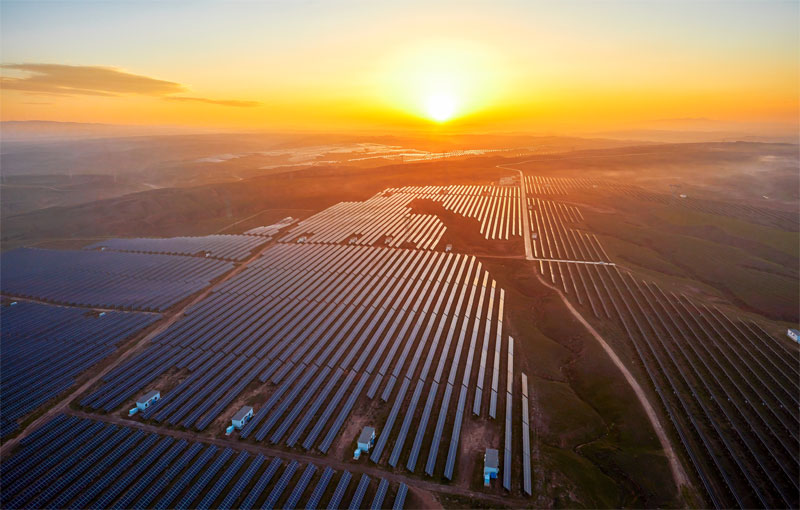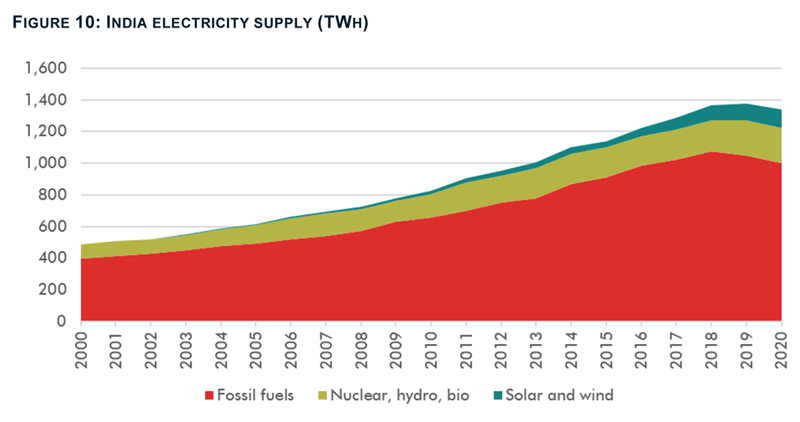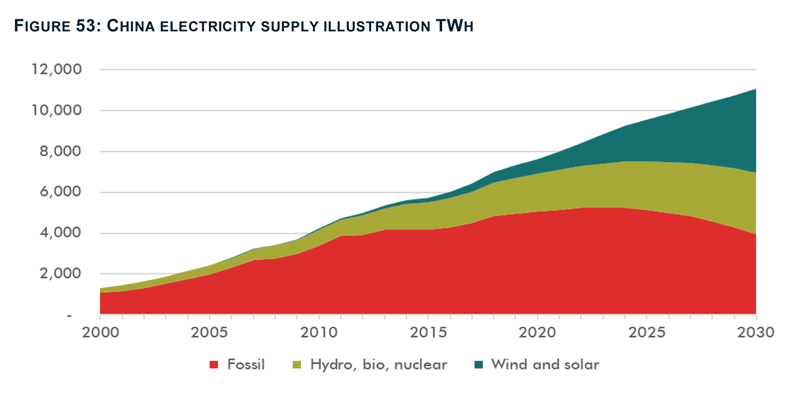
16th July 2021 Fossil fuel electricity generation has peaked worldwide Fossil fuel electricity generation has peaked worldwide as emerging markets seize the opportunities of low-cost renewables, according to a report published this week by India's Council on Energy, Environment and Water (CEEW) and the financial think tank Carbon Tracker. Renewables are already the cheapest source of new electricity additions in 90% of the world, the report notes. Emerging markets (non-OECD nations plus Chile, Colombia, Mexico and Costa Rica) therefore have no need to build up huge electrical infrastructure based on fossil fuels. Instead, they are leapfrogging this stage and meeting growth in demand by deploying clean energy systems – such as wind and solar – with huge potential to boost economic development and bring electricity to millions more people. The report – Reach for the Sun – notes that emerging markets are key to the global energy transition. They account for 88% of all expected growth in electricity demand between now and 2040. "Emerging markets are about to generate all the growth in their electricity supply from renewables," said Kingsmill Bond, Carbon Tracker energy strategist and a co-author of the report. "The move will cut the costs of their fossil fuel imports, create jobs in domestic clean power industries, and save millions of lives lost to fossil fuel pollutants."
"Around 770 million people still lack access to electricity," said Arunabha Ghosh, CEO of CEEW and report co-author. "They are a small share of forecast growth in electricity demand, but the international community has a moral obligation to support universal electricity access as the basis for achieving many other sustainable development goals." In richer countries, the demand for fossil fuels for electricity generation has fallen by 20% since it peaked in 2007. Only two developed nations have yet to reach peak fossil fuel demand for electricity. The transition is different in emerging markets because they have electricity demand growth from a lower base, as well as the need to provide access to hundreds of millions of people. Nevertheless, fossil fuel demand for electricity has already peaked or plateaued in 63% of emerging markets ex-China, from Chile to Nicaragua, from Kenya to Thailand. India, which accounts for 20% of expected demand growth, illustrates the speed and scale of change. From less than 20 GW in 2010, it has grown to over 96 GW of solar, wind, biomass and small hydro in 2021. Including large hydropower, renewables now provide 142 GW or 37% of the country's total power capacity and it has a target of 450 GW by 2030. Demand for fossil fuel generation plateaued in 2018, then fell in 2019 and again during 2020. This month, only 19 of 67 Indian coal mines received bids during an auction for private companies, according to Reuters, "reflecting little investor appetite for a sector clouded by environmental concerns and low margins."
China, which accounts for nearly half of emerging markets electricity demand and 39% of expected demand growth, is also on the cusp of change, with solar and wind capacity growing at over 20% each year. Assuming electricity demand growth of 4-5% and solar and wind supply growth of 20-25%, fossil fuel demand for electricity in China will peak before 2025. This will keep the country on track for its long-term goal of carbon neutrality. The reduced emissions from China alone could prevent 0.3°C (0.5°F) of global average temperature increase. Continuing to build fossil fuel power risks huge losses, the report explains. China would face more than $16 billion in stranded assets by 2030 if it continued to build coal plants without controls. Europe's electricity sector wrote down $150 billion of losses after fossil fuel demand peaked in 2007.
Resistance to the energy transition is more entrenched in coal and gas exporting countries, but they account for just 16% of emerging market electricity demand and 10% of expected demand growth. Some are already changing: Gulf nations such as Saudi Arabia are now showing signs of embracing solar. The report finds that a supportive policy environment is key to driving growth in renewables. If countries liberalise markets and introduce competitive auctions, they can cut costs and attract international finance as capital markets turn their backs on fossil fuels. Auctions have helped India drive the cost of solar down to one of the world's lowest levels. Developed countries can speed up the transition to renewables in emerging markets by providing policy support, technology expertise and by using development finance to reduce the cost of capital. The report says it is in their interests to do so, in order to support global climate targets, and for geopolitical reasons as the US seeks to counter growing Chinese influence.
Comments »
If you enjoyed this article, please consider sharing it:
|









